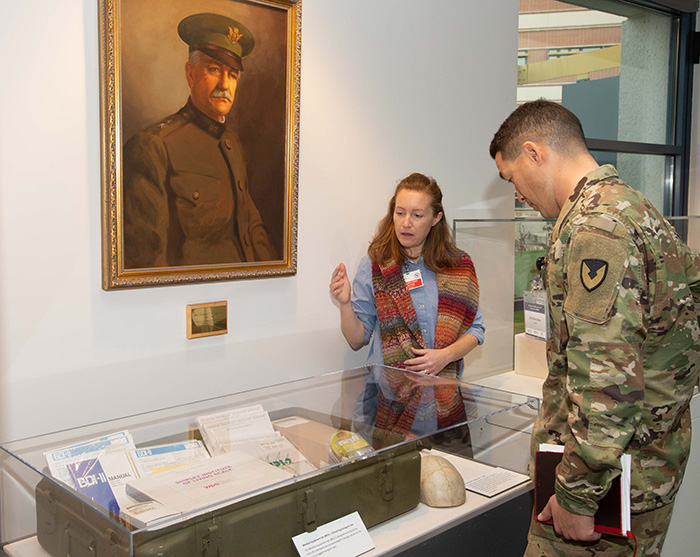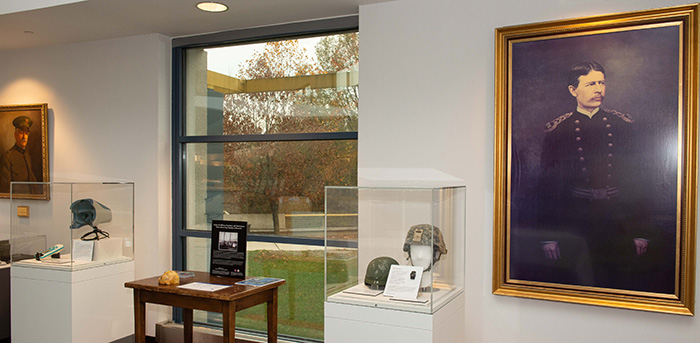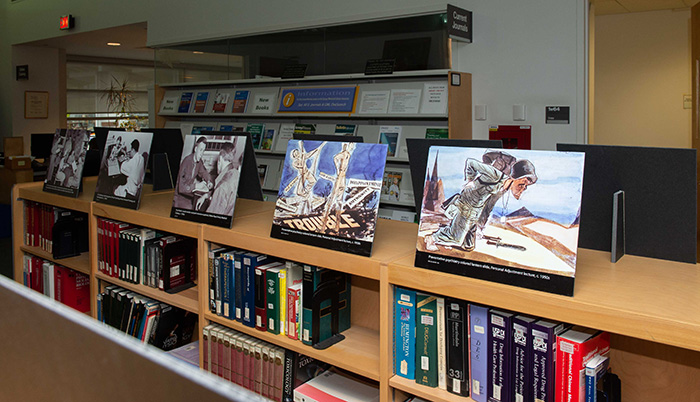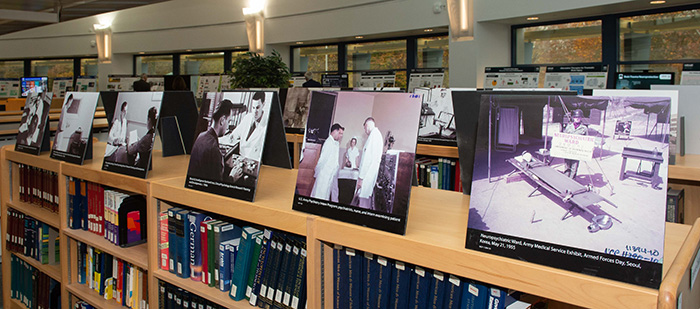Medical Museum Collections Supported 125th Anniversary Celebration at Walter Reed Army Institute of Research
By Lauren Bigge
NMHM Public Affairs Coordinator
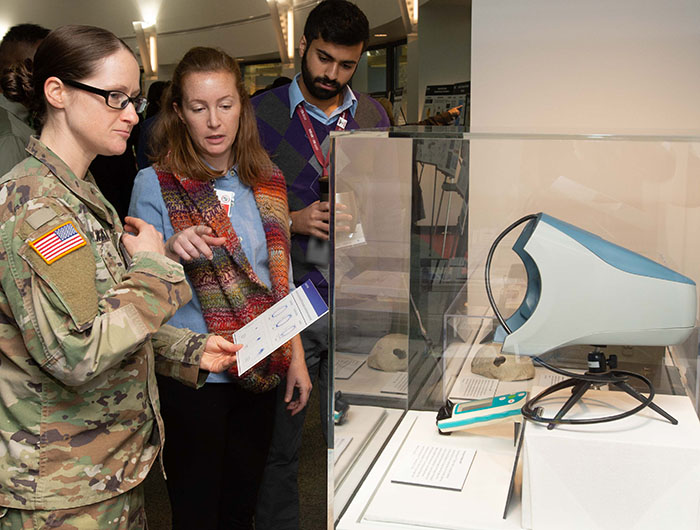
An exhibit of artifacts and materials from the Historical and Otis Historical Archives Collections Divisions of the National Museum of Health and Medicine (NMHM) was displayed during the Nov. 14, 2018 anniversary celebration at the Gorgas Memorial Library, Walter Reed Army Institute of Research (WRAIR) in Silver Spring, Md. The exhibit, "Center for Military Psychiatry and Neuroscience: Walter Reed Army Institute of Research," supported the theme "125 Years of Military-focused Research at WRAIR." Historical museum specialist Caroline Marsh points to a chart of patterns used with the Eye-Sync System in the diagnosis of traumatic brain injury, as visitors view both the Eye-Sync System and Infrascanner Model 2000. (National Museum of Health and Medicine photo by Matthew Breitbart/Released)
Artifacts and images from the National Museum of Health and Medicine's (NMHM) Historical and Otis Historical Archives Divisions were displayed during the Walter Reed Army Institute of Research's (WRAIR) celebration of 125 years of military-relevant biomedical research on Nov. 14, 2018.
Army Lt. Col. Vincent Capaldi, chief of the Department of Behavioral Biology at the Center for Military Psychiatry and Neuroscience Research at WRAIR, selected eight objects, 21 photographs, and two illustrations from NMHM's collections for a special exhibit complementing WRAIR's focus on military psychiatry and neuroscience research. The objects and images were specifically chosen because they reflect WRAIR's purpose and historical discussions in the context of brain health research.
"We felt that the NMHM could strongly support the medical history mission of our event both by providing selections of its large collections and interacting with visitors to explain their context and significance," said Belinda Harris, event planner for the 125th anniversary of the Center for Military Psychiatry and Neuroscience Research. "Additionally, WRAIR's predecessor, the Army Medical School, was founded at NMHM's predecessor, the Army Medical Museum."
The exhibit in the Gorgas Memorial Library included photographs documenting military psychiatry; an Infrascanner Model 2000 and Eye-Sync System, both used for traumatic brain injury diagnosis; a Blast Gauge sensor and an Advanced Combat Helmet with blast sensors, both used to measure overpressure caused by explosions in a combat setting; and a field clinical psychology set, which brings all the tools of a standard clinical psychologist's therapy session to the field. The artifacts and other materials helped emphasize important research areas at WRAIR ranging from brain trauma to military psychiatry to sleep.
"Everything we displayed is a [Department of Defense] technology that either was deployed or is currently tested and approved for deployment," said Caroline Marsh, museum specialist for NMHM's Historical Collections Division. She answered questions for event attendees who stopped to see the exhibit. Marsh noted there was significant interest in the traumatic brain injury diagnostic artifacts.
